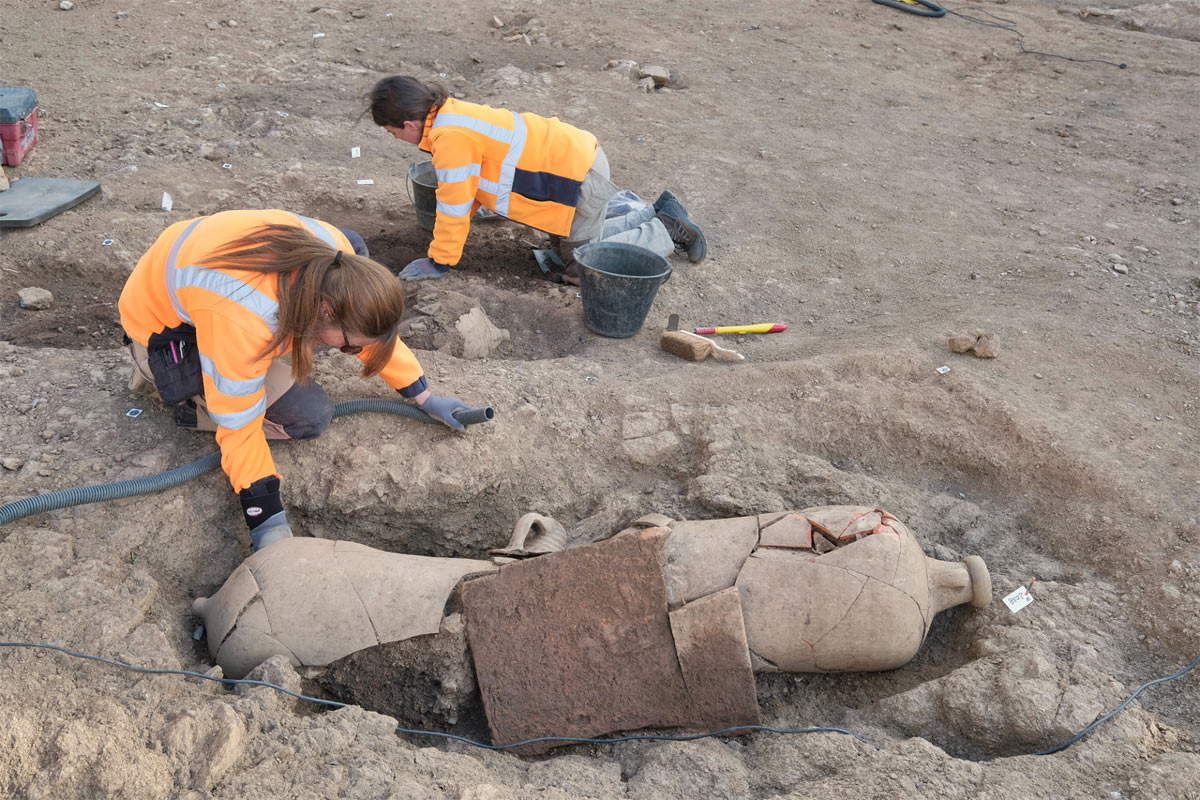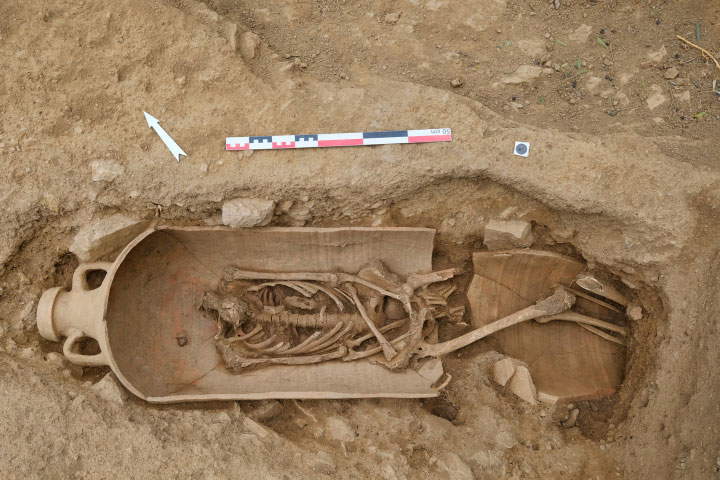A Roman-era necropolis from the 3rd-4th centuries AD has been discovered in Corsica, near the town of L’Île-Rousse, in the north of the island: theInstitut national de recherches archéologiques préventives (INRAP) announced the discovery. The necropolis emerged from a preventive archaeology excavation carried out in anticipation of some real estate projects in the center of the village. The discovery is important because no significant discoveries had been recorded in this area of Corsica prior to this find: finds near L’Île-Rousse were rare and fragmentary, and consequently this necropolis of considerable size for the context could suggest that there were significant settlements in the area.
Examinations conducted in the spring of 2019 had revealed the presence of a dozen or so ancient burials, unaffected by the many urban changes that L’Île-Rousse has undergone since the nineteenth century: in fact, the town was founded in 1758 by Pasquale Paoli, a hero of Corsican independence, in an area where only a few fishermen’s houses were recorded until the eighteenth century. The necropolis, in particular, is located in front of the Church of the Immaculate Conception: the site has been extensively excavated since last February, and the research conducted over an area of six hundred square meters has shown that the burials are very different from each other (some pits are dug directly into the rock), while others are made of earthenware, covered with the tiles that the Romans called imbrices, “embrici.” In addition, inhumations have also been found in amphorae, thus used as urns to contain the remains of the deceased. Inhumation in amphorae was reserved mainly for children, but in some cases this use has also been found for adults (very large amphorae were used, suitable for holding a human body). These are mostly African-made amphorae, widespread in Corsica between the fourth and seventh centuries: they were used to transport and store wine, oil and brine imported from Carthage and present-day Tunisia.
A total of some 40 tombs have been discovered: the discovery, INRAP points out, “rewrites the ancient past of L’Île-Rousse and, more generally, of Corsica’s west coast. Known examples on the island of these inhumations are often associated with cult buildings, as with the sites of Mariana or Sant’Amanza. Here, no building has been uncovered at the moment, but its existence in the immediate context of the funerary area covered by the archaeological excavation cannot be ruled out.”
Below, photographs by Pascal Druelle (INRAP) related to the discovery
 |
| The necropolis of L’Île-Rousse |
 |
| The necropolis of L’Île-Rousse |
 |
| The necropolis of L’Île-Rousse |
 |
| The necropolis of L’Île-Rousse |
 |
| The necropolis of L’Île-Rousse |
 |
| Major archaeological discovery in Corsica: a necropolis from the 3rd-4th centuries emerges |
Warning: the translation into English of the original Italian article was created using automatic tools. We undertake to review all articles, but we do not guarantee the total absence of inaccuracies in the translation due to the program. You can find the original by clicking on the ITA button. If you find any mistake,please contact us.